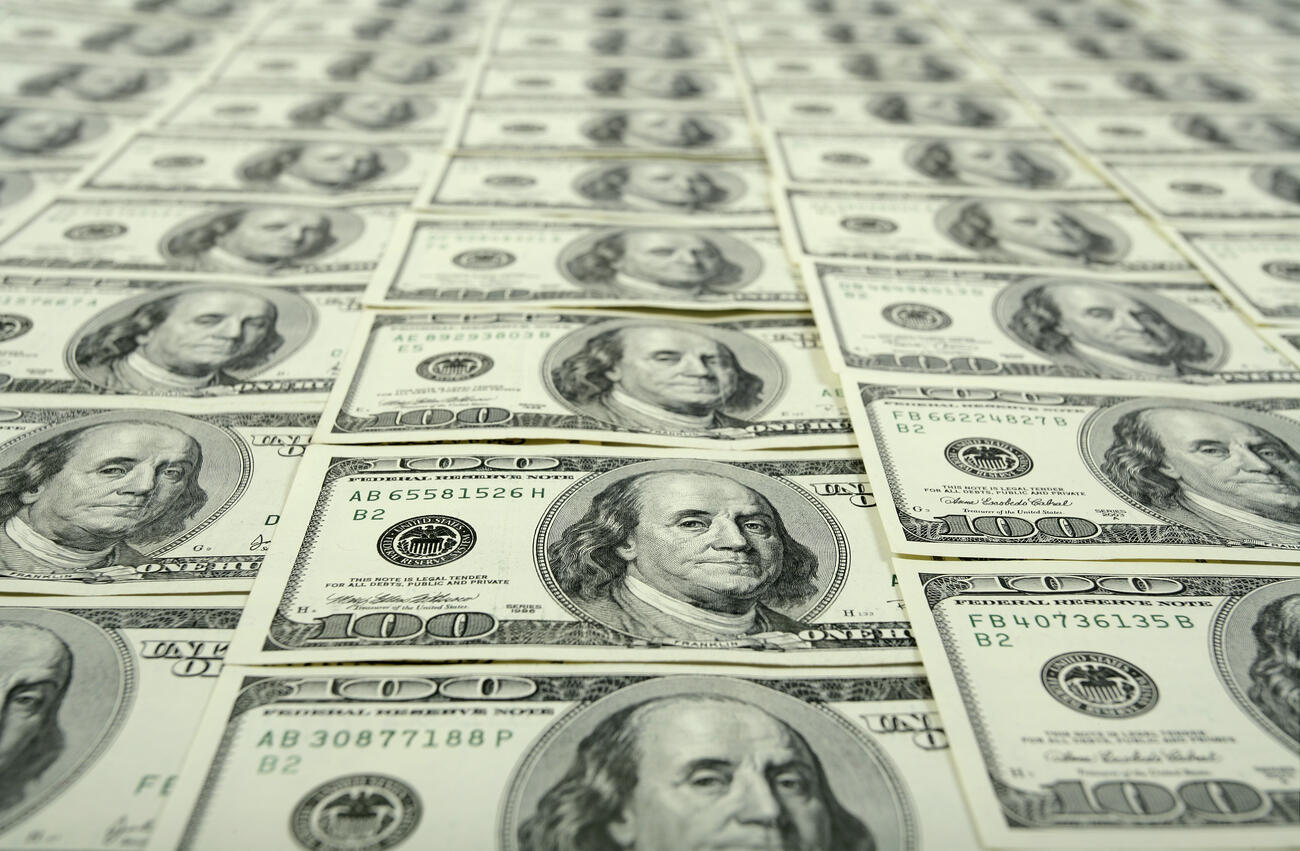Let us start by acknowledging that the US dollar is and will remain the dominant global currency for the foreseeable future. It accounts for approximately 80% of global trade invoicing, 90% of FX transactions, 98% of stablecoin backing and half of global FX reserves.
US Treasuries are the world’s preferred reserve asset, benefiting from the depth and liquidity of US markets and supported by the most buoyant and innovative economy. Over the last 15 years, foreign investors have enjoyed the dual benefit of attractive nominal yields and currency appreciation. However, we believe there is a strong medium-term case for caution regarding the USD.
Deficit danger
The US fiscal situation is deteriorating meaningfully. Public debt now exceeds 120% of GDP – more than double what it was 15 years ago – while fiscal deficits are running at approximately 6% of GDP. Even more worrying, mandatory spending (including healthcare, net interest, welfare, veterans, and military spending) now represents roughly 75% of all federal expenditure and is compounding at a rate of about 10% per year.
The recently passed One Big Beautiful Bill is unlikely to reverse these trends, extending large tax cuts and adding discretionary government spending without matching savings. Historically, countries have not been able to “grow their way out” of such high debt burdens. There is little evidence to suggest this time will be different.
Efforts by the US government to rebalance global trade – whether through tariffs, supply-chain reshoring, or industrial policy – will help reduce exaggerated external imbalances over the longer term and additionally increase government revenues. However, doing so without sacrificing internal growth is a complex and delicate process. As such, expectations for meaningful net trade-driven deficits improvements in the next few years should remain modest.
Against this backdrop, the risk is that bondholders may begin to demand higher nominal yields to compensate for rising US credit risk. Alternatively – or even sequentially – yields may need to be capped through policy intervention. Of the two outcomes, we believe the latter is more plausible.
Policymakers appear increasingly willing to tolerate, or even engineer, a weaker dollar to safeguard domestic growth. Recent commentary from the White House on USD strength, re-emerging debates around Federal Reserve independence, and rumours of global currency coordination or “accord”-style interventions all point to a growing policy bias toward a managed decline in the dollar’s value.
Hidden hedging
Shorter term, we need to have in mind that the expectations on the strength of the US economy, especially on the labour front, could change the anticipated monetary policy path. What happened in the last few days of July is a clear example of this dynamic, and we have started August with a strong conviction that the US economy needs a push from the Fed, translating into two cuts this year and two or three more next year.
Meanwhile, foreign investors currently hold $31.4 trillion in US equities and fixed income, and the US runs a net international investment deficit of roughly $26 trillion, or about 90% of GDP. We do not believe the main risk to the dollar lies in outright massive selling of USD assets, However, the more subtle and potentially more powerful dynamic is a shift in hedging behavior. As US short term interest rates fall and hedging costs decline, more foreign investors – particularly from Europe and Japan – may increase their USD hedges.
A more careful consensus on the USD should also weigh on these decisions. Reports from the BIS and other private institutions suggest large institutional investors around the world are structurally and historically under-hedged USD. Hedging involves selling USD forwards and the unhedged position size can drive significant flow pressure on the currency. Finally, funding Europe’s reindustrialisation and remilitarisation also means the need to reallocate fresh capital on this side of the pond.
In our portfolios
At the same time, alternatives to the USD continue to perform well. Gold has more than doubled in price over the last five years, benefiting from falling real yields, fiscal instability, and increased demand from central banks. These factors, as well as the heightened geopolitical uncertainty, make us believe gold should remain a strategic holding in portfolios. Similarly, institutional investors are increasingly adopting cryptocurrencies, and as volatility declines and access improves, they too are becoming a credible, albeit high-risk, complementary store of value for private wealth.
In summary, the USD will remain the global reserve currency, but even a small reduction in its dominance could have significant implications. A less attractive credit profile, potential policy-driven currency weakness, crowded foreign ownership, and rising hedging flows all suggest the risks are skewed to the downside.
We continue to advocate for holding diversifiers such as gold, and for hedging part of the USD exposure in global portfolios, especially in an environment where consensus is less bullish on the dollar and the policy mix appears increasingly tolerant of USD weakness.




